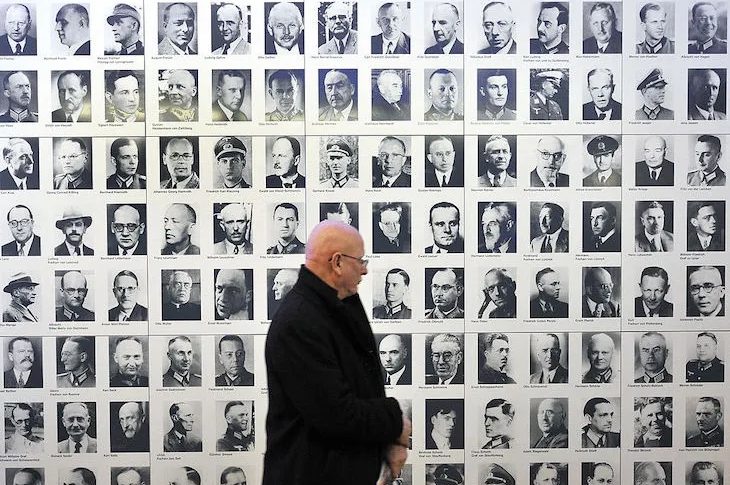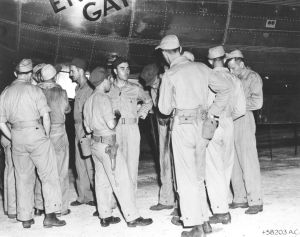Seventy-nine years ago today, July 20, 1944, Colonel Count Claus von Stauffenberg, a much-wounded young Wehrmacht officer, packed a briefcase in a broiling Berlin and flew to the “Wolf’s Lair” the headquarters of Adolf Hitler deep in a Polish forest 100 miles behind the eastern front.
Stauffenberg — who had lost an eye, a hand, and all but two fingers on his remaining hand in North Africa — packed a deadly load wrapped in a spare shirt: two lumps of captured British-made plastic explosives along with their detonators. Summoned to attend a military conference with the Führer, his true aim was to assassinate the dictator who was leading his beloved Germany to disaster.
Stauffenberg succeeded in planting his bomb and bluffed his way out of the tight security screen surrounding the Wolf’s Lair to return to Berlin and launch Operation Valkyrie: a military putsch to depose the Nazis and end World War Two. But crucially, Hitler had survived the blast that killed four other officers around the conference table.
As soon as the news spread that Hitler was still alive, Stauffenberg’s coup collapsed. In Paris, where the plotters had arrested their Nazi SS colleagues, they were forced to release their captives with embarrassed excuses; in Berlin, loyal troops surrounded the Bendlerblock — the building where the putsch was hatched. Stauffenberg and three of his lieutenants were taken out and shot by a firing squad: the first victims of Nazi vengeance on the plotters that would finally take hundreds more lives. Only a handful survived the war.
Today, the leaders of Germany will gather at the Bendlerblock as they do every year to solemnly commemorate Stauffenberg and his colleagues in an annual ceremony representing Germany’s official attitude: that the plotters were true heroes embodying the “real” Germany in resisting Hitler and all his evil works.
Beneath the homage, however, Valkyrie has left a more complex legacy that has marked and even distorted German politics down to the present day. This has been shown most starkly in the Federal Republic’s response to Russia’s invasion of Ukraine. At the time, Germany was almost totally dependent on Russia for most of its energy: it imported around half of its gas from Russia and more than a third of its oil. Unsurprisingly, Germany initially showed a marked reluctance to condemn Putin’s attack or supply Ukraine with tanks and other weapons to defend itself.
Eventually Chancellor Olaf Scholz’s left-wing coalition was shamed into allowing German-made Leopard tanks to reach Kyiv and began to seek gas and oil from other sources outside Russia. But his first response revealed Germany’s default position which has hobbled its actions as Europe’s leading power since the war.
Paralyzed by shame over Nazi crimes and the Holocaust, and seeking to make amends to Russia for its own invasion in 1941, German foreign policy has been effectively one of pacifism with a red face. In rejecting its militarist past, Berlin has thrown the baby out with the bath water and become an economic giant but a military weakling.
Under the incompetent watch of former defense secretary Ursula von der Leyen (now head of the European Commission), Germany’s neglected armed forces reached a degraded state in which, to quote one commentator, “her submarines couldn’t sail, her aircraft couldn’t fly, and her soldiers went on NATO exercises armed with broomsticks.”
The historical debate over the Valkyrie plot reflected this ambivalent attitude towards Germany’s dark past. Some Germans still see Stauffenberg and his colleagues not as heroes but as traitors who stabbed Germany in the back at her time of greatest peril.
Moreover, many seek to denigrate Stauffenberg’s towering reputation by pointing out that he and his fellow conspirators were conservative nationalists who wanted to keep the territorial gains that Hitler had annexed or won: including Austria, Alsace-Lorraine and much of Poland.
Others allege that the conspirators only acted because after Stalingrad, Kursk and D-Day they knew that Germany had irretrievably lost the war and wanted to save something from the wreckage.
This is deeply unfair to the brave men and women who laid their lives on the line to end Nazi rule. It also ignores the fact that some had been plotting to kill or arrest Hitler as early as 1938. Yet the Valkyrie plotters can be legitimately criticized for their technical flaws and vacillations — not least sending a man with one eye, one hand and only two fingers to undertake the tricky task of priming and placing a bomb next to Hitler. (In fact, Stauffenberg’s war wounds meant that he only primed one of the two bombs he carried, lessening the force of the blast and thereby possibly saving the dictator’s life).
There are signs in today’s Germany that, after eight decades, attitudes towards the war, nationalism and German guilt may be changing. Opinion polls put the openly nationalist AfD party on 20 percent — more than the ruling Social Democrats — and support for Ukraine is definitely weakening. The long shadows cast by 1933-45 are still darkening the future.
This article was originally published on The Spectator’s UK website. Subscribe to the World edition here.

























